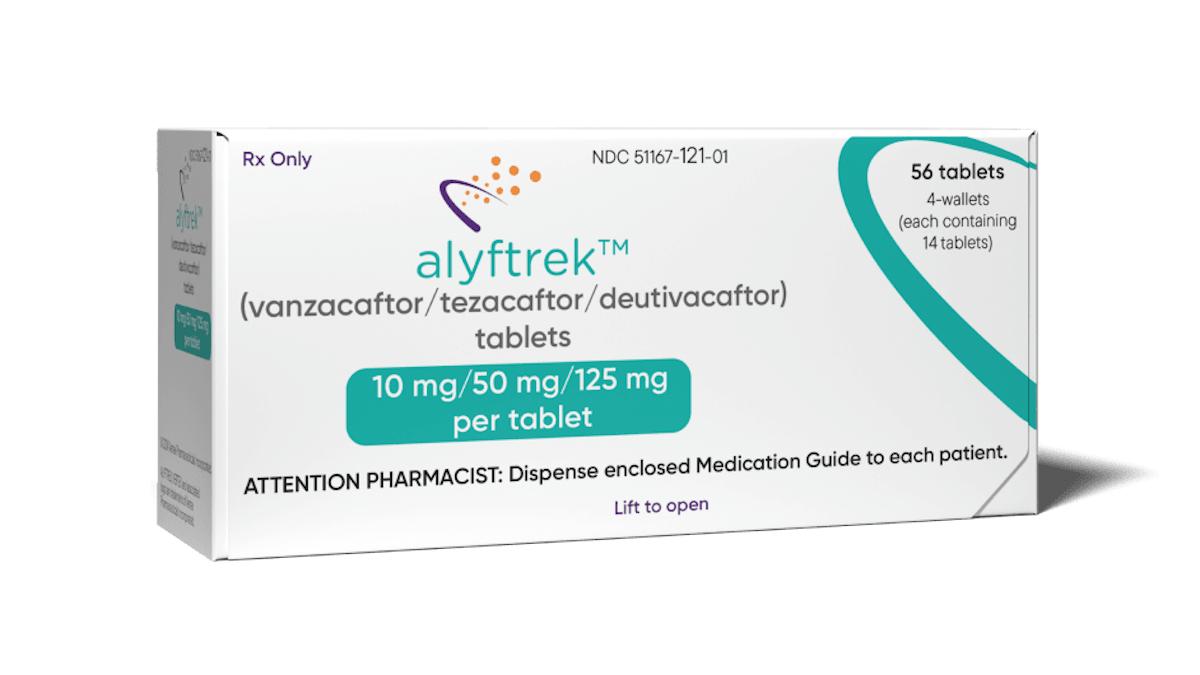Vertex selects its triple for cystic fibrosis

Vertex Pharma has chosen the three-drug combination it intends to submit for approval later this year for cystic fibrosis, in a bid to add another product to its stable.
The US company has plumped for VX-445 (elexacaftor) as the compound that it will add to its already marketed drugs tezacaftor and ivacaftor, after reviewing data from two clinical trials, to try to increase the number of CF patients eligible for treatment with one of its drugs.
The decision stems from a 24-week phase 3 trial of the trio in CF patients aged over 12 with one F508del mutation and one minimal function mutation, and a four-week Phase 3 study in people with two F508del mutations, the most common mutation in CF.
Vertex introduced its first CF drug – Kalydeco (ivacaftor) – in 2012, and has since followed up with launches for two-drug combinations Orkambi (lumacaftor/ivacaftor) and Symdeko/Symkevi (tezacaftor/ivacaftor) in 2015 and 2018 respectively, which together cover for the mutations seen in around half of all CF patients.
Vertex has been testing multiple triple regimens in an attempt to extend the proportion that can be treated with a Vertex drug to around 90% of people with the genetic disease, characterised by mutations in the CFTR protein that causes respiratory difficulty as well as problems with the pancreas, liver, kidneys, and intestine.
“People with CF who have one F508del mutation and one minimal function mutation are the largest remaining group of CF patients without a treatment option for the underlying cause of their disease,” said Vertex chief medical officer Reshma Kewalramani.
The company says it now plans to file for US approval in the third quarter of the year, and European approval in the fourth quarter. The decision means that Vertex has effectively stopped development of VX-659, its other frontrunner for the triple therapy.
Vertex says it decided that the VX-445 triple combination regimen could benefit the greatest number of CF patients based on multiple factors, including “favourable profiles for safety, tolerability and drug-drug interactions, the ability for co-administration with hormonal contraceptives, and the lack of photosensitivity.”
Approval of the VX-445 combination looks reasonably likely, given that it’s an extension of already-marketed drugs, but the commercial prospects for the therapy are less clear, given ongoing wrangling with payers in the UK, and earlier debates about the their affordability in France and Germany.
The UK in particular has been taking a hard line on Vertex’ therapies, with no access for CF patients yet despite increasingly acrimonious horse-trading between the company, NHS England and NICE.
Outliers like the UK haven’t stopped Vertex making healthy sales from its CF drugs however, with Kalydeco, Orkambi and Symdeko collectively bringing in $857 million in the first quarter, a rise of 34% year-on-year.
Vertex’ chief commercial officer Stuart Arbuckle has previously said that the clinical data with the triple therapy could be the factor that unlocks reimbursement in countries that are still holding out.
“We've seen a significant increase in patient advocacy since triple results were released,” he said. “I find it very hard to believe that there's going to be governments [denying] patients access to such an important medicine that can treat the underlying cause of their disease.”












